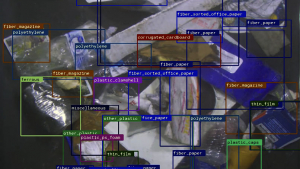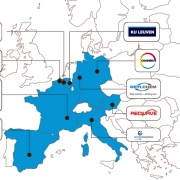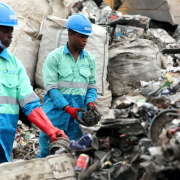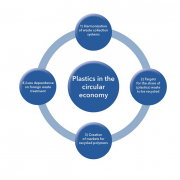How AI and Data Capture Are Improving MRF Operations in an EPR World
It’s been a mere few years since robots first made inroads into recycling, but the impact they are having on the productivity and efficiency of materials recovery facilities (MRFs) is evident. They’re addressing many of the central challenges the industry faces, from worker safety and bale purity to labour shortages and lowering the overall cost of recycling. And as we emerge from the trenches of the pandemic, artificial intelligence (AI) and robotics technology have helped recycling businesses be resilient as the importance of recycled materials as feedstock for our supply chain came sharply into focus.
As we look to the future, it’s AI that offers great potential to continue to transform recycling, delivering more value to MRFs and beyond. Robots are one application of AMP Robotics’ core AI technology today; each robot leverages AI to digitize the objects that pass by on a conveyor belt. Looking for specific colours, shapes, textures, logos, and more to recognise patterns correlated with material type, the platform learns to identify objects in the same way a human does. The software understands the heterogeneity, value, and contamination in material streams. It grows smarter and more effective over time as our fleet of AI-guided robots expands. This is material intelligence – a new category of information.
As Extended Producer Responsibility schemes emerge and mature around the world, solutions that further integrate AI and data into a MRF will be highly sought after to aid compliance and reporting requirements. One of these solutions is AMP Clarity, a web-based data portal that surfaces real-time material characterization and performance measurement throughout key process stages of a MRF’s sorting operations. It allows operators to do things like graphically compare material stream data to historical baselines, define material count thresholds and create alerts triggered by movement above or below these thresholds, export data for further analysis and integration into business intelligence platforms, and more. This is all intended to support monitoring and analysis of material composition as it flows through a facility, providing visibility into and feedback about material streams.
For instance, in the UK, current guidelines require sampling for incoming material streams by supplier and material stream output for specified target material. Sample size depends on material type – plastics, for example, is 20 kilograms for every 20 tonnes of outgoing material. The current consultation document for EPR suggests increasing this sampling frequency by five to 15 times, adding more time, paperwork, space, staffing, and ultimately, costs to a MRF’s operation.
Clarity can simplify material analysis and reporting. Its interface displays the recognised material type, the confidence factor on the proper material type identification, and the target surface area. AMP or the customer can fine tune the target material by robot confidence. So, if it’s a high-confidence factor, the robot will take whatever action the customer has designated – either leave the material on the belt or pick it and drop it into one of the designated chutes. The customer can prioritise the material type to pick first when the robot has a choice of material in its view. If one commodity is more valuable than another, the robot will pick first whatever the customer has set as the highest priority. Conversely, if it’s a low-confidence factor, the customer can decide whether to identify it or classify it as “other material.” Clarity reports material composition analysis by material type as well as the total amount of material seen by the system. This delivery of real-time monitoring and analysis enables data-driven decision-making to:
- Optimize recovery: See what’s in your material stream, what trucks it’s coming from, and when volumes are hitting your lines at different times, then take action to adjust and improve.
- Gain real-time performance insights: Track how your QC stations, container lines, fibre lines, and last chance lines are performing during specific times. See where, and when, spikes are happening so you can address issues, and analyze bale quality, bunker, or specific shift data.
- Reduce downtime and risk: Know immediately when there is a process interruption or safety hazard on lines throughout your operation.
The artificial neural network of the AI platform encompasses the largest known real-world dataset of recyclable materials for machine learning. AMP Robotics is capturing data on more than 10 billion objects annually, and that number continues to compound. The company can classify more than 100 different categories and characteristics of recyclables across single-stream recycling, e-scrap, and construction and demolition debris.
It’s impossible to manage what you can’t measure. As its sophistication grows, AI will take on an increasingly significant role in helping operators understand not just the what, but the why, behind changes in the material they’re processing. As AMP Robotics extends its efforts to deploy technology that shifts the economics of recycling and grows the circular economy, further embrace of AI and the data and insights it yields will keep the industry moving forward.
Source: AMP Robotics, author: Gary Ashburner (Louisville, CO, December 21, 2021)







